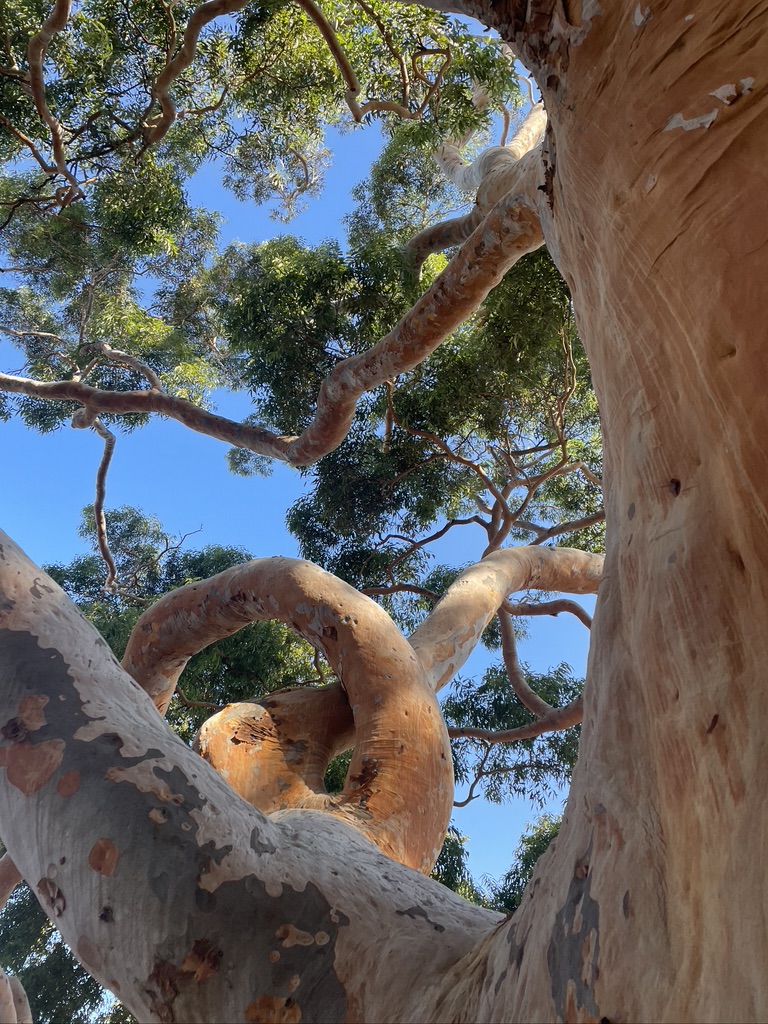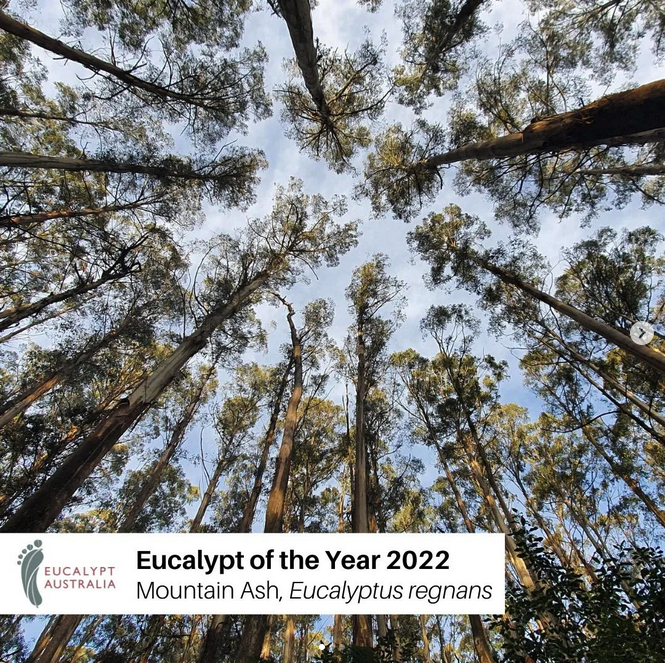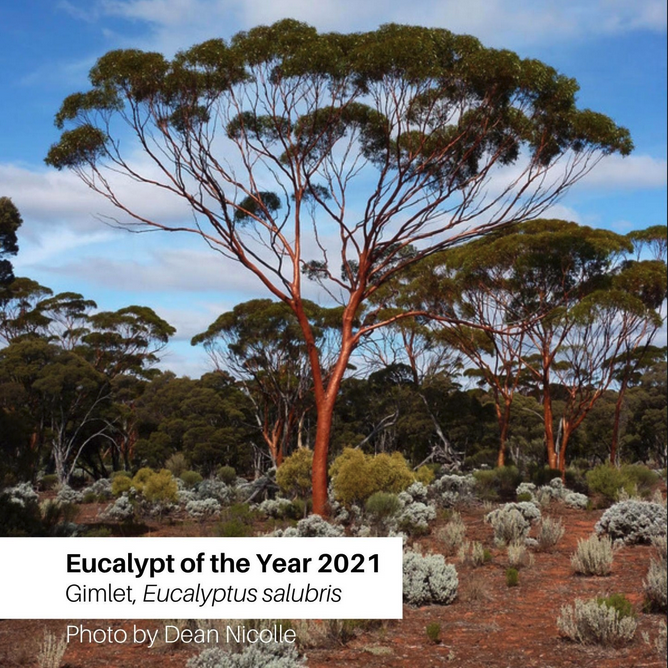
2023 Eucalypt of the Year
Angophora costata
It’s no wonder the tree is so well-loved, with those fantastically wiggly limbs that capture the imagination, and that smooth red bark that calls out to be touched!
Known as kajimbourra by the Dharawal people, the Sydney Red Gum is synonymous with the sandstone escarpments of the Greater Sydney region, where it grows in woodlands on shallow, sandy soils. Also known as the Smooth-barked Apple, the species is distributed from Bodalla on the NSW South Coast to Coffs Harbour (NSW North Coast), from the coast to adjacent inland ranges. Interestingly, there are disjunct populations on sandstone escarpments west of Townsville, suggesting a wider historic distribution.
Many Australians will be most familiar with the Sydney Red Gum as an important part of the urban forest in our cities and towns. With its broad trunk, attractive bark and spreading form, the species has been planted widely across suburban parklands and streetscapes and is beloved well beyond its natural range.
The Sydney Red Gum has this in common with this year’s runners-up, the Lemon-scented Gum (Corymbia citriodora) and Red Flowering Gum (Corymbia ficifolia). Each are so widely and commonly planted they have become part of the Australian psyche, at least in the south, where they evoke strong memories of childhood summers and days past.
Previous Years’ Winners:





